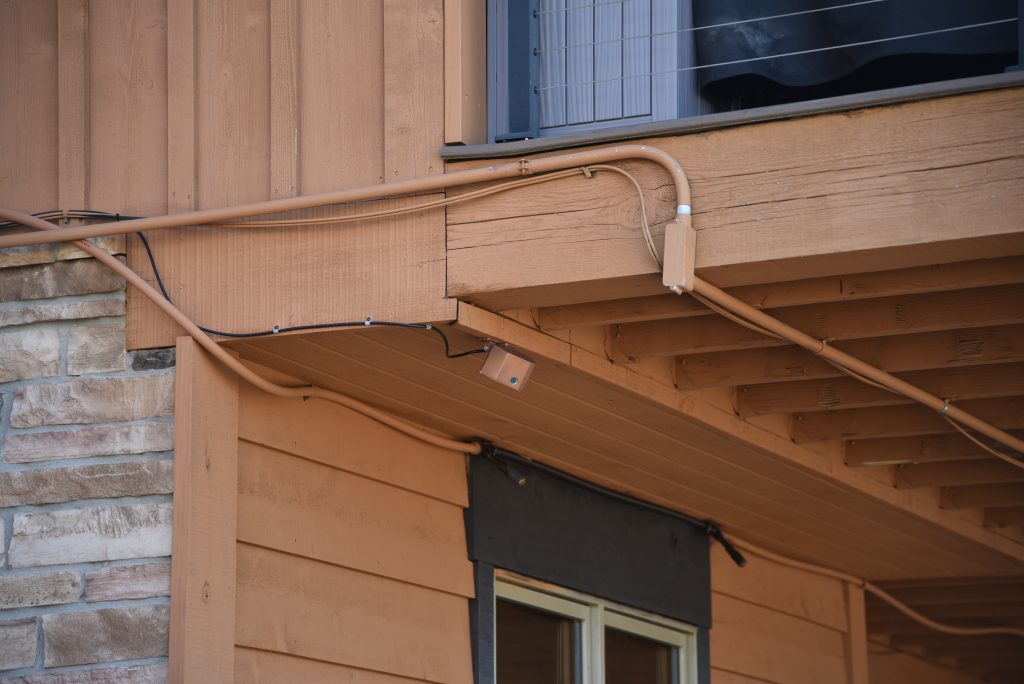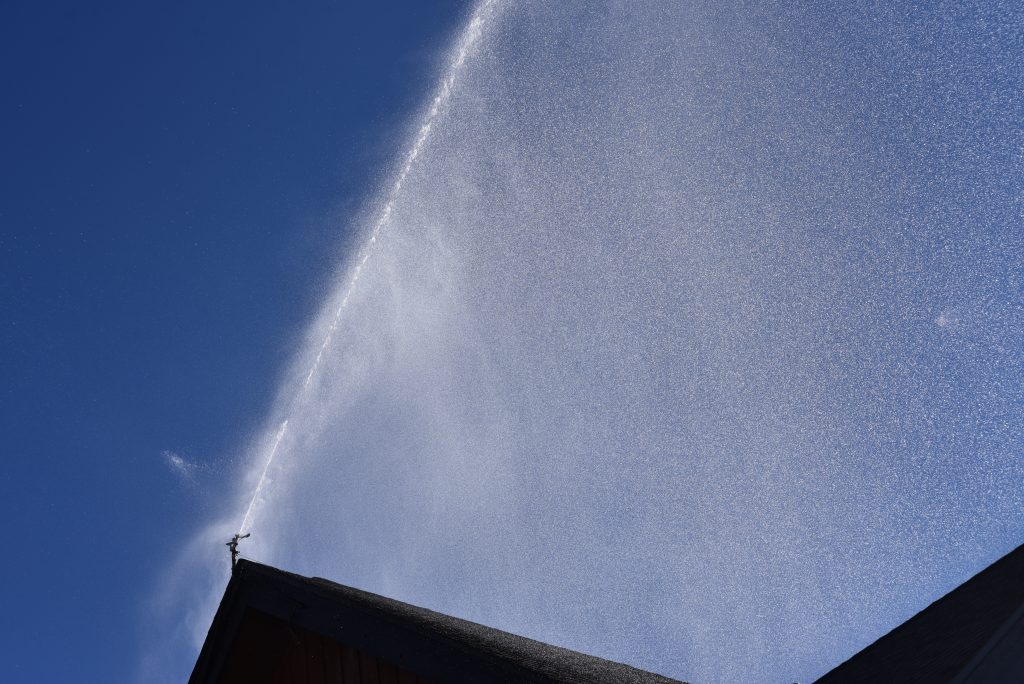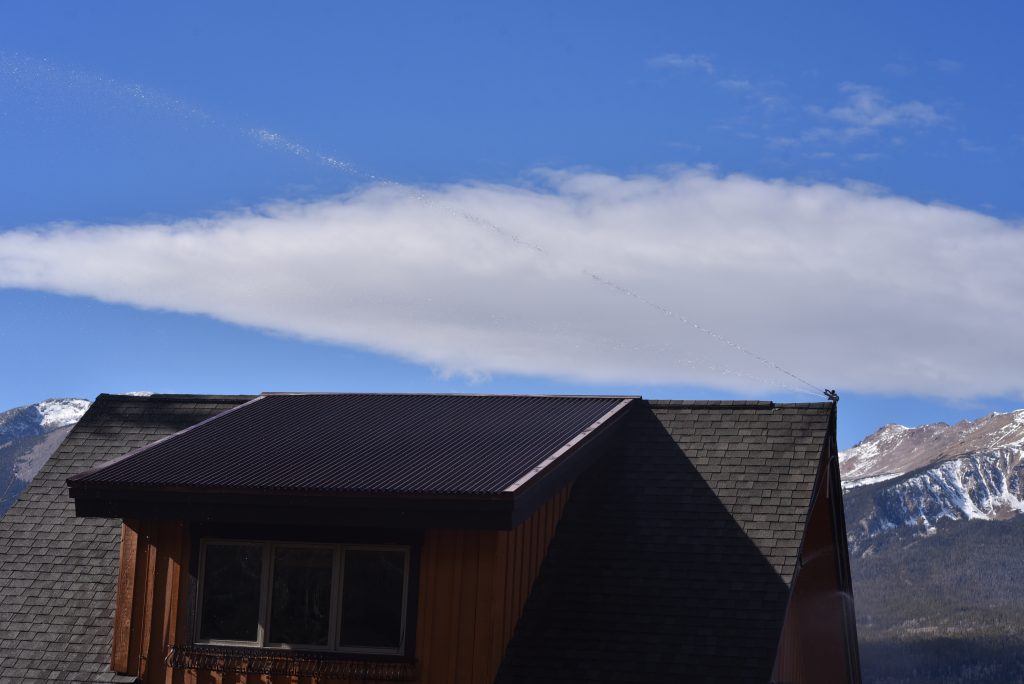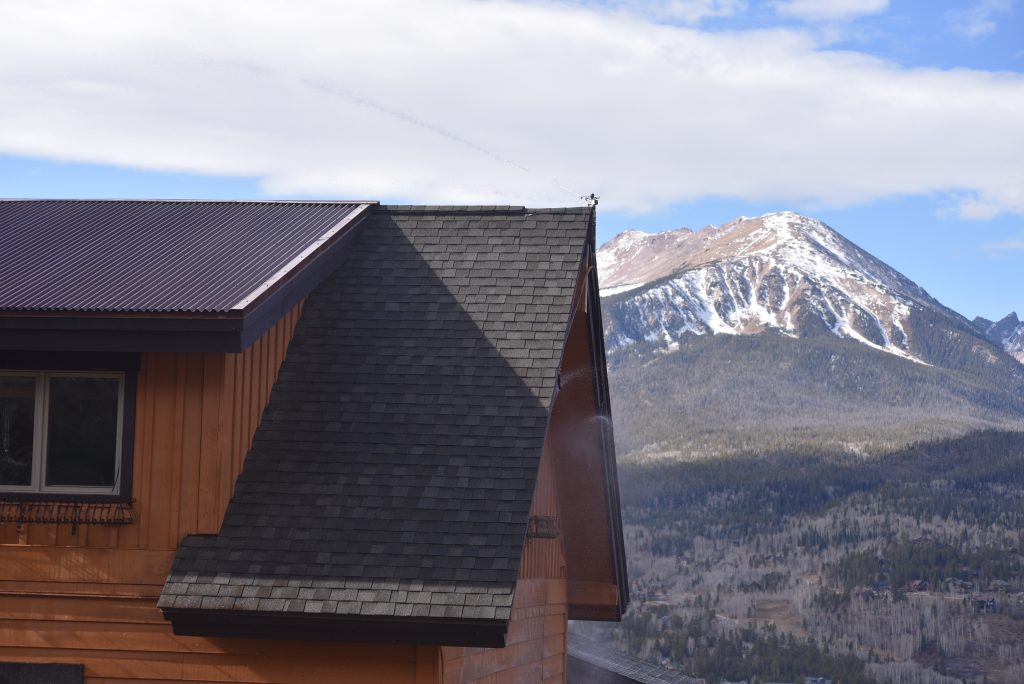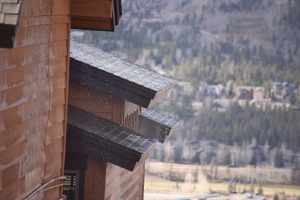‘Wet homes have a hard time burning’: Summit County residents protect homes from wildfires with special sprinkler system

Kyle McCabe/Summit Daily News
After coming close to losing their home to the Ptarmigan Fire in 2021, a Summit County father and son teamed up with another father-and-son duo to help homeowners in the wildland urban interface protect their homes from wildfires.
Duston Dolamore and his dad were not home when the Ptarmigan Fire broke out near the Hamilton Creek neighborhood outside Silverthorne in September 2021. Dolamore said his dad called him right after landing in South Carolina to tell him about the fire.
“We had to have one of our neighbors come over,” Dolamore said. “They had to clear out as much as they could within, like, 40 minutes, because they already had to do their house. It got really scary, and it’s just the worst feeling in the world knowing that there’s a wildfire burning nearby and you’re not there.”
Dolamore and Nick Christiansen graduated from Snowy Peaks and Summit High School, respectively, and returned to the county after college and started Defense Delivered, a company that designs and installs sprinkler systems on the exterior of homes to help protect them from wildfires.
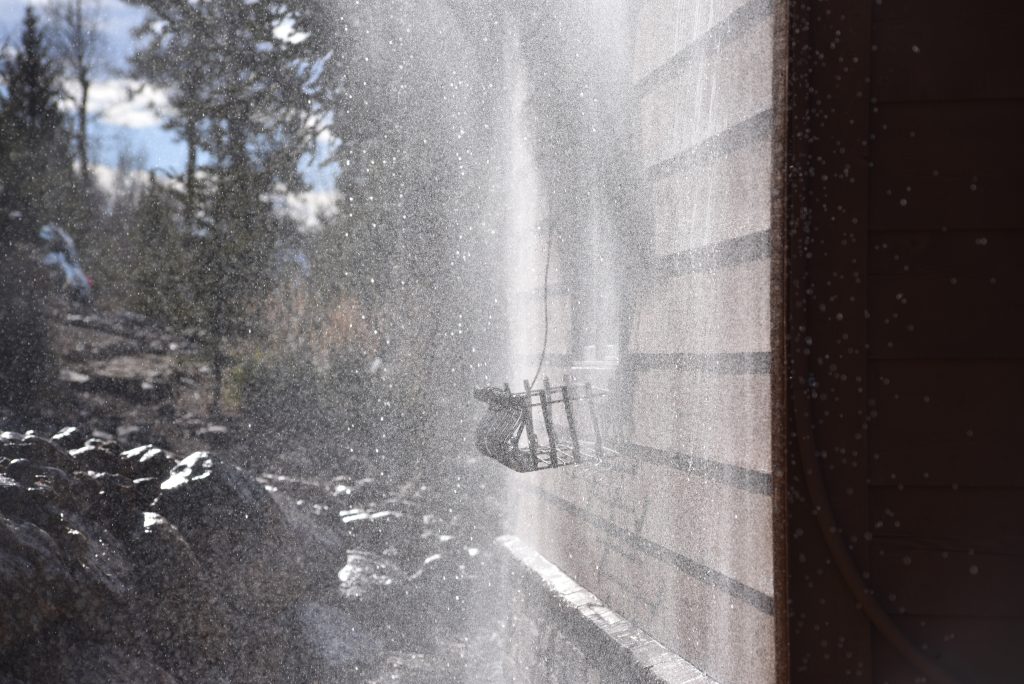
Similar systems exist, Dolamore said, and are especially popular in Australia. Matt Benedict, the Red, White and Blue Fire Protection District wildfire division chief, wrote in an email that firefighters dealing with a wildfire look to take fuel away from the fire or make fuel less likely to burn.
“This system can keep a structure wet as the fire approaches, therefore limiting its ability to ignite,” Benedict wrote.
Other systems use the wind-enabled ember dousing, or WEEDS, method, Dolamore said, which uses sprinklers on the roofline of a home to spray into the wind, assuming the wind will blow the water back onto the home. Defense Delivered’s system instead sprays water directly onto the home.
“We know that there’s going to be 40 mph winds,” Dolamore said. “So we want the water right on the home. We really try to put it right up to it.”
Installations at different properties can vary, but the prototype installed on the Dolamores’ home outside Silverthorne has around 58 small nozzles around the house and two large sprinklers on the roof, Dolamore said.

The home next door has a system as well, and with about 3,000 square feet less surface area to cover than the Dolamores’ house, it has about 53 small nozzles and two large sprinklers. The neighbor’s house is a “more complete example” of what a production home will look like, Dolamore said. Its system is less visible from the street, uses copper pipes instead of the prototypes’ flexible plastic ones and has improved spouts, he said.
Benedict wrote that Defense Delivered is “following some very important elements” of what firefighters know causes homes to burn during wildfires. The most likely way for a home in the wildland urban interface to ignite, he said, is from the “ember storm,” or embers traveling with the wind ahead of a fire.
The Defense Delivered system uses satellite inputs, Dolamore said, and if the satellites show a fire within two miles of a home, the system starts a “light pre-wetting process.” Then, if one of the system’s thermal cameras picks something up, Dolamore said it triggers that “zone” of the system to turn on fully, preparing for embers.
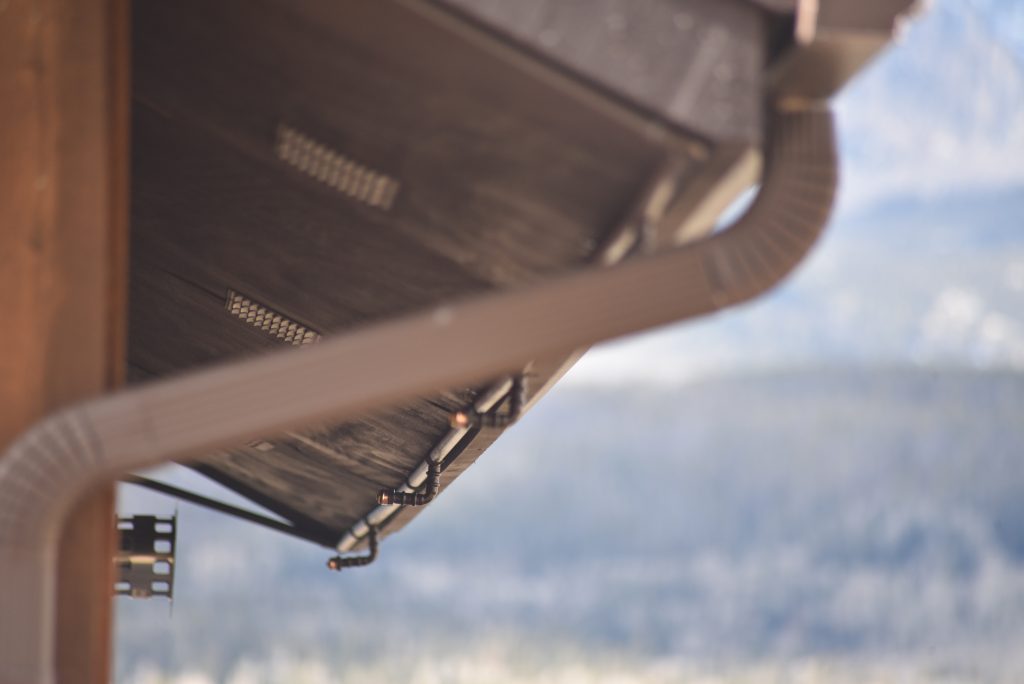
Benedict said the system “is targeted” and puts water right where embers often collect, like on the house’s eves, siding, architectural corners and overhangs.
“It’s not just big cannons throwing water out in the middle of the landscape,” Benedict said. “It’s throwing water, almost misting, showering water, right up against the house, right where the ignitions would be happening.”
The system increases the relative humidity, Benedict said, which helps prevent embers from propagating. Other mitigation efforts, like clearing a home’s defensible space, help lower the chances of flames directly contacting the house. That mitigation combined with high humidity deals with embers and direct flames “pretty effectively,” Benedict said.
“Wet houses have a hard time burning,” Benedict said.
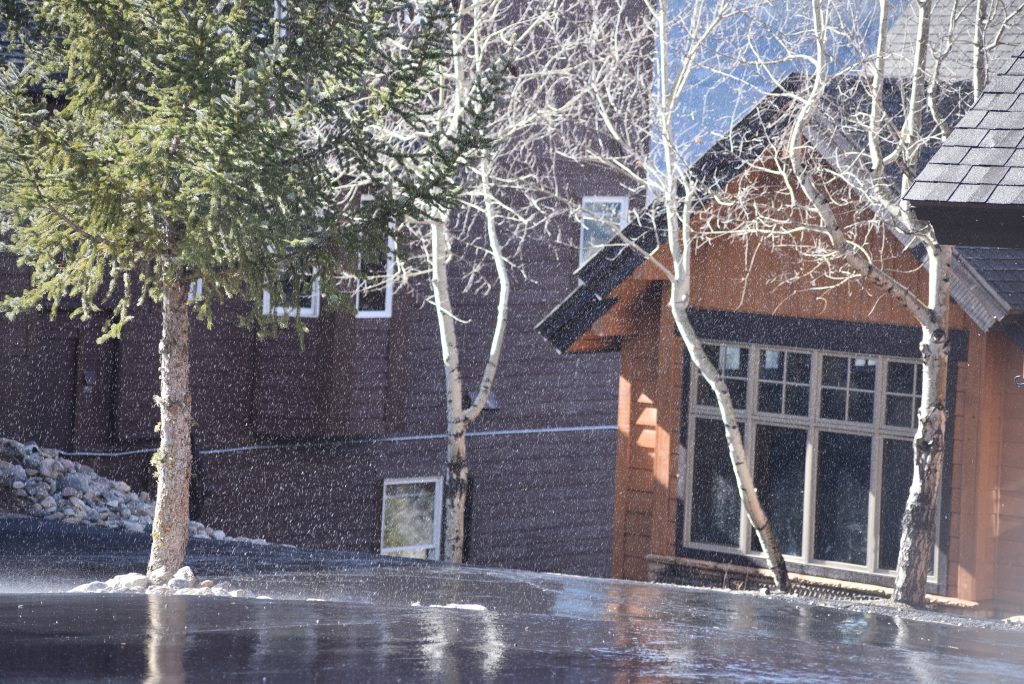
Defense Delivered’s system wets the home in four sections, or zones, as a way to use water more efficiently and reduce pressure loss. The company’s proprietary software adjusts which zones activate based on input from temperature sensors, thermal cameras and satellite data to protect the windward side of the home first.
“The fire department said, ‘Well, if you turn everything on at once, it’s going to use too much water,'” said Dana Christiansen, Defense Delivered’s chief marketing officer. “We came up with a way of, you know, using a quarter of the water and cycling it around four zones of the house, and we’re down to an amount of water usage that they like.”
Sensors can trigger the system automatically, but Defense Delivered also has a mobile app that allows homeowners to monitor and trigger the system themselves.
“It’s like a Ring doorbell system,” Dana Christiansen said. “If you’re out of town, you can see your house, you can activate it manually or override that automatic activation. It gives you a lot of control of the system.”
Dolamore said the system works well for high-altitude homeowners by draining completely when not in use.
“The system remains completely dry until it’s wet,” Dolamore said.
The company offers free home wildfire safety inspections, where Dolamore, a certified wildfire mitigation specialist, analyzes a home’s defensible space and makes suggestions for how to better “harden” the home against wildfire danger.
At a home the company worked on in Silverthorne, Dolamore said they installed fireproof mesh over vents to prevent embers from entering and did landscaping around the house.
“We removed a large amount of brush,” Dolamore said. “We limbed up the trees, we added gravel barriers around the existing trees that are, let’s say, within 30 feet of the home, but at least further than 5 (feet). We removed dead trees.”
Defense Delivered originally looked to work with existing companies and be their “Colorado branch,” Dolamore said, but found other systems to be too expensive.
“We really wanted to build a system and not price people out,” Dolamore said.
While pricing can fluctuate depending on the needs of each project, Dolamore said most installations cost around $7.50 per square foot. Dana Christiansen said a 3,000 square foot home, then, would cost around $22,000.
A Colorado state bill signed into law earlier this year requires insurance companies to recognize homeowners’ wildfire mitigation efforts when determining wildfire risk. The law aims to lower insurance rates for homeowners.
Dana Christiansen said Defense Delivered hopes their systems help people lower their insurance costs or regain insurance if they had previously been denied due to high wildfire risk.
“Imagine if you’re saving $7,000 a year off your insurance premium because you have this, and the system costs $22,000,” Dana Christiansen said. “It pays for itself in three years.”

Support Local Journalism

Support Local Journalism
As a Summit Daily News reader, you make our work possible.
Summit Daily is embarking on a multiyear project to digitize its archives going back to 1989 and make them available to the public in partnership with the Colorado Historic Newspapers Collection. The full project is expected to cost about $165,000. All donations made in 2023 will go directly toward this project.
Every contribution, no matter the size, will make a difference.

